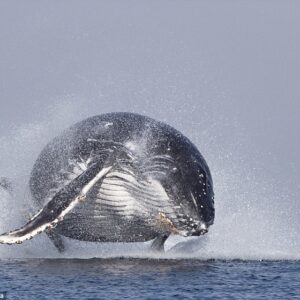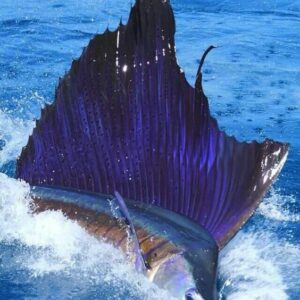:focal(1061x707:1062x708)/https://tf-cmsv2-smithsonianmag-media.s3.amazonaws.com/filer_public/08/8a/088a219f-a9a0-4df3-9bb0-1bc3a9d6ebee/gettyimages-1155265547.jpg)
:focal(1061x707:1062x708)/https://tf-cmsv2-smithsonianmag-media.s3.amazonaws.com/filer_public/08/8a/088a219f-a9a0-4df3-9bb0-1bc3a9d6ebee/gettyimages-1155265547.jpg)
In 1773, German zoologist J.A.E. Goeze looked through a microscope at a sample of water and was surprised to discover a tiny, eight-legged, slow-moving animal. Its body resembled a shriveled, shrunken version of a surreal mammal. He decided to call it “kleiner Wasserbär”—German for “little water bear.” Three years later, Italian biologist Lazzaro Spallanzani contributed his own flair, dubbing the creature “tardigrada,” Italian for “slow stepper.”
Tardigrades, as they are formally known today, are also sometimes called “moss piglets,” after their chubby, ho-hum appearance and lackadaisical demeanor. But their adorable nicknames and amusing features shouldn’t be mistaken for weakness—tardigrades are one of Earth’s most resilient creatures, possessing a near-immortality and a wherewithal to survive extreme conditions that has intrigued scientists for centuries.
Having lived on Earth for at least 600 million years, water bears persisted through all five mass extinction events. They can withstand the radiation of outer space, endure the heat and pressure around volcanic ocean vents and weather temperatures close to absolute zero. They can even survive being fired out of a gun at nearly 2,000 miles per hour.
“It seems likely that it will take the death of our sun to finally end the long journey of the tardigrades,” Ben Panko wrote for Smithsonian magazine in 2017.
Now, a new study published Wednesday in PLOS ONE finally hints at how the water bear achieves its feats of survival. With a slight change at the molecular level, scientists say, the animals can enter a life-preserving state of extreme dormancy.
/https://tf-cmsv2-smithsonianmag-media.s3.amazonaws.com/filer_public/de/72/de72eca2-77a9-4b8c-b461-3c3806951b65/50594153231_be616a78e9_k.jpg)
/https://tf-cmsv2-smithsonianmag-media.s3.amazonaws.com/filer_public/de/72/de72eca2-77a9-4b8c-b461-3c3806951b65/50594153231_be616a78e9_k.jpg)
“We were curious about tardigrades,” co-author Derrick Kolling, a chemist at Marshall University, says to Science News’ Tina Hesman Saey. “Tardigrades aren’t extremophiles, they’re extremo-tolerant.”
It was previously known that when facing external stressors, tardigrades curled up into a little ball, entering a sort of deep hibernation called tun. During tun, the animals’ legs retract, their metabolism drastically slows and they nearly completely dehydrate themselves. But how or why tardigrades entered this state remained largely unclear.
Kolling and other researchers began by exposing tardigrades to a variety of harsh conditions, including hydrogen peroxide, sugar, salt or temperatures of minus 112 degrees Fahrenheit. They found that, like other animals, the stressed creatures began producing free radicals—oxygen atoms with an extra, unpaired electron. Free radicals are highly reactive and destabilize other proteins or DNA segments as they seek to resolve their added negative charge.
The team noticed that, in particular, the free radicals reacted with cysteine, an amino acid used in protein production. When they prevented the free radicals from reacting with, or oxidizing, cysteine, the tardigrades couldn’t enter tun.
“Cysteine acts like a kind of regulatory sensor,” study co-author Leslie Hicks, a chemist at the University of North Carolina at Chapel Hill, says to New Scientist’s Chen Ly. “It allows tardigrades to feel their environment and react to stress.”
/https://tf-cmsv2-smithsonianmag-media.s3.amazonaws.com/filer_public/f5/13/f513e20f-c922-4900-9396-748f1737aac8/jolrhq8cgbcvoyvwyp63ig-970-80jpg.webp)
/https://tf-cmsv2-smithsonianmag-media.s3.amazonaws.com/filer_public/f5/13/f513e20f-c922-4900-9396-748f1737aac8/jolrhq8cgbcvoyvwyp63ig-970-80jpg.webp)
Tun isn’t the only way that tardigrades endure tough times, so more research still needs to be done to uncover the animals’ full arsenal of survival abilities. To withstand extreme cold, for example, tardigrades don’t enter tun. However, the team found that the water bears couldn’t survive freezing when they blocked the free radicals’ ability to oxidize cysteine. Perhaps, Hicks tells Science News, this means cysteine plays a role in all of tardigrades’ survival strategies, even beyond tun.
“It’s opened up a whole huge repertoire of experiments we can now pursue,” Hicks says to Scientific American’s Meghan Bartels.
Free radicals have been linked to age-related ailments, so the team hopes more studies of tardigrades could shed light on aging. The research could one day inform how to achieve long-term space travel and deepen scientists’ understanding of dormant states like cryptobiosis.
More work remains to completely understand the mysteries of tardigrades’ survivability, including how they re-emerge from tun, when the animals are seemingly dead, says Hans Ramløv, a comparative physiologist at Roskilde University in Denmark who was not involved with the study, to Science News. “It obviously does not explain how you can stop metabolism and die, and restart metabolism and live.”



